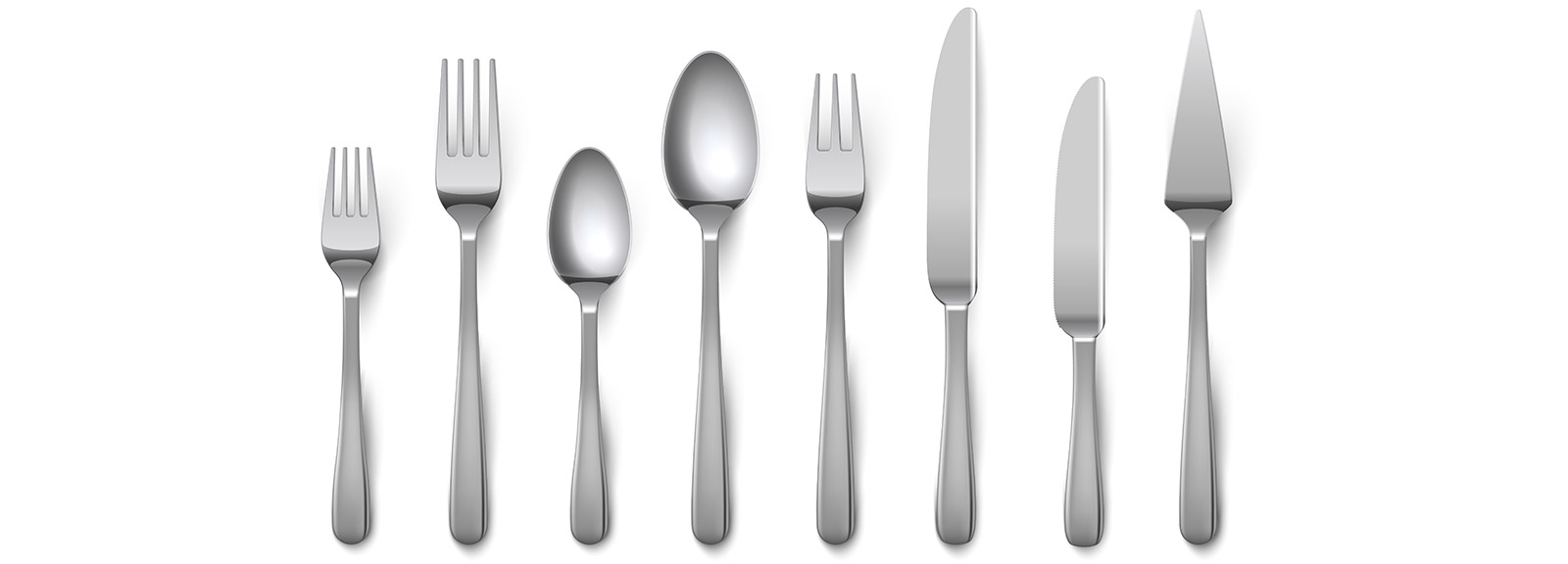Care of Restaurant Flatware

The flatware you use in your restaurant is one of the first items that your customers see. If it is spotted or pitted, it certainly makes a bad impression and could turn customers off to your establishment. Therefore it is quite essential to keep your flatware clean and shiny.
To care for your restaurant flatware, vigilance is required as you are dealing with high volumes of flatware, much more than you would ever see in your own home. Therefore, it is important to understand why your stainless steel flatware, which is rust and corrosion resistant, requires special care and then, follow our guide to aid you in the process of caring for your flatware.
Discoloration, Pitting, Spotting
There are a number of foods that can damage your stainless steel flatware and cause discoloration, pitting and spotting. These foods attack the stainless steel and can permanently damage the surface, dull the shine and make your flatware lose its luster. Acidic foods and alkalines such as citrus, diary enzymes, salad dressings, vinegar, salt, mustard, mayonnaise and eggs can all wreak havoc on your flatware, so they must be removed promptly and with the proper soaking solutions.
Pre-Soaking
In the effort not to allow food to remain on the flatware for too long make sure to rinse off food immediately after use by using a pre-rinse unit, sponge or rubber scraper. Never use metal scouring pads or other metal scrapers as they can scratch up your flatware.
Have the proper soaking solution set up in the ware washing station using a plastic or stainless steel container.
Note: Avoid aluminium and copper containers as they react poorly with any pre-soak solution and can corrode your flatware.
Make sure not to soak flatware with china or other types of metal. The pre-soak process should be between 10-20 minutes, and be sure never to leave flatware to soak overnight.
Note: Don’t forget to change your pre-soak solution every few cycles as dirty pre-soak solution is just an accumulation of chemicals and food residue that won’t do much to help clean your flatware.
Washing and Drying
After pre-soaking your flatware, load the dishwasher flatware cylinder with the handles of the spoons, the tines of the forks, and the blades of the knives down, and always wash vertically. Never overcrowd the washing baskets with flatware. By allowing adequate space between flatware during the wash cycle, you will get cleaner cutlery.
Washing temperatures should be higher than 135-degrees as lower temperatures can attack metal. And rinsing temperatures should be performed in high temperatures of up to 180-degrees and then dried immediately. Drying promptly will decrease spotting, streaking, discoloration, and corrosion.
Note: Take into consideration the type of detergent you choose. Certain detergents containing bleach or heavy chlorination can erode away the protective coating on your flatware. Avoid detergents with lemon or orange additives as they can cause corrosion of your stainless steel. Consult with the manufacturer of your restaurant flatware for the recommended detergents for cleaning your flatware.
Storage
Flatware is best stored away from the cooking area in a dry place. Choose vertical flatware cylinders or horizontal cutlery bins with separate compartments to store types of flatware together and avoid mixing different types of metal together in one storage compartment.
Tips for Refurbishing Flatware
If your flatware is becoming tarnished or discolored, you can resolve this in several ways. One way is to use a stainless steel cleaner and a microfiber cloth and massage it into your flatware. Then, using a clean rag, wipe the cleaner off, much in the same way you would polish silver. This helps restore the shine and removes small scratches from the flatware.
Another way is to use olive oil as an alternative to chemical cleansers. Apply the olive oil to the flatware and then wipe off all the excess oil when you are done.
Expiring Flatware
The discoloration of flatware is not necessarily an indication that using the flatware is harmful to one's health. However, it does leave a bad impression on your customers. If you find that your flatware does not look new enough to cycle through service, then you can reserve it for private use or give it away. Unlike glassware or dinnerware, flatware may not actually be damaged to the point of needing to be discarded even though it may look a bit discolored.